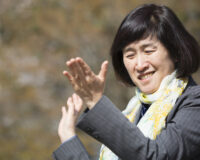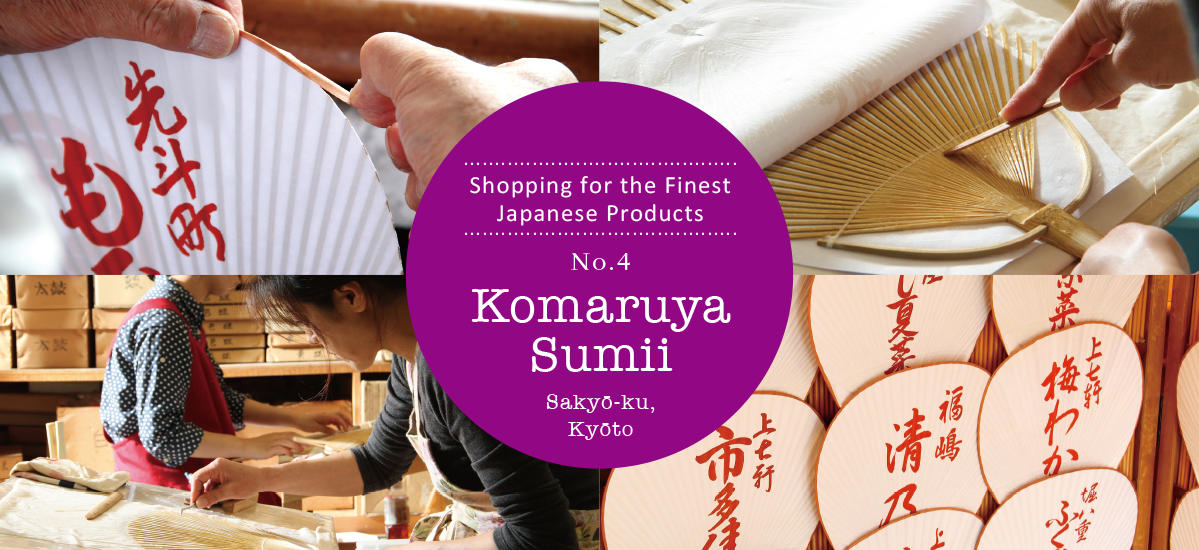
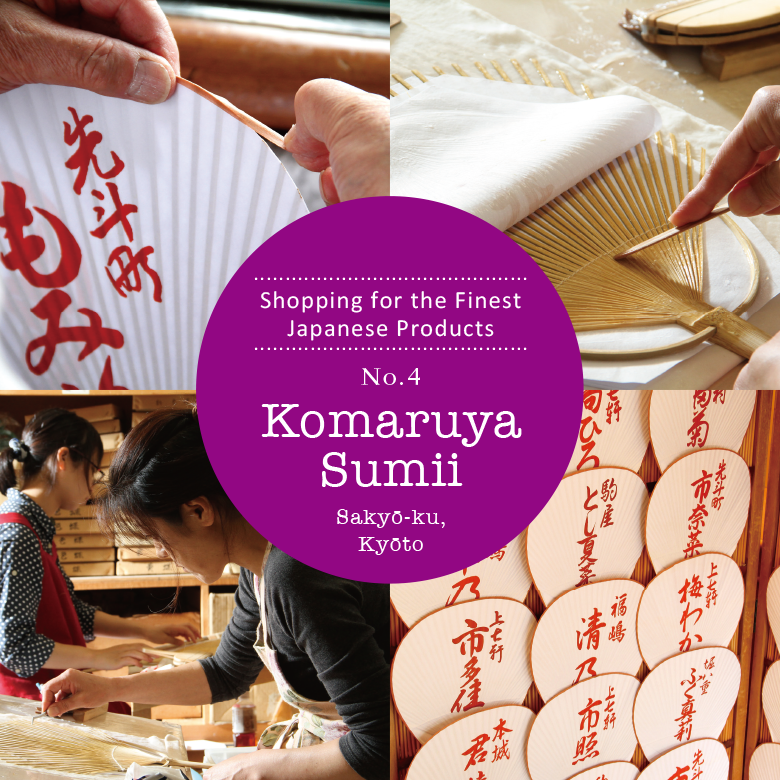
Nothing speaks of summer in Japan more than decorative bamboo and paper fans known as uchiwa. The increasingly common plastic-framed uchiwa just can’t hold a candle to the exquisite form of a traditional uchiwa, hand-crafted from bamboo and washi paper. Not only are they beautiful to look at, they impart a lovely, soft breeze that helps make the steamy Kyōto summer just that bit more bearable. Continuing a tradition of exquisite craftsmanship and maintaining the history behind one of the most iconic symbols of summer in Kyōto, Komaruya Sumii are purveyors of fine bamboo uchiwa fans.
Photos : 谷口哲 Akira Taniguchi / English Version : Judy Evans
Keyword : Kyōto / Shopping / Shopping for the Finest Japanese Products Series / Famous Shops / Traditional Goods / Uchiwa Fans
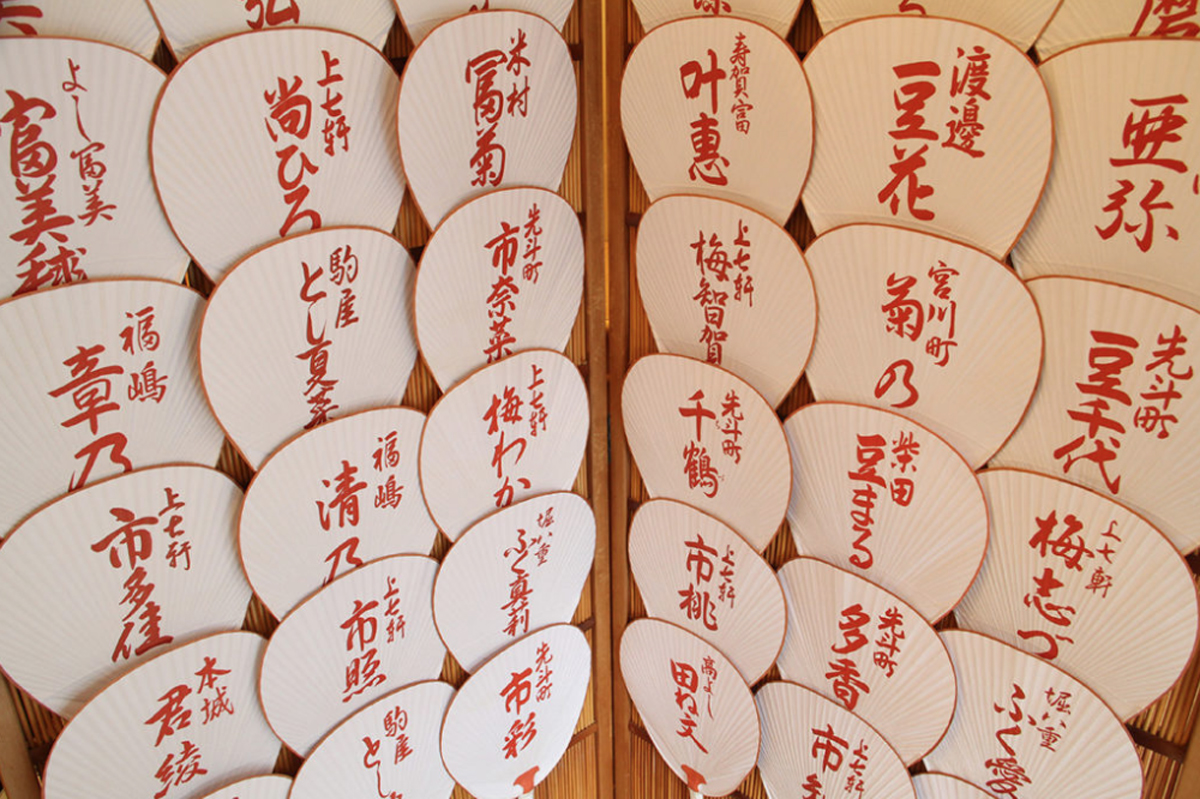
The geiko and maiko of Kyōto’s “kagai”, or geisha districts, continue to maintain the custom of visiting the premises of their patrons and presenting them with hand-crafted fans known as Kyōmaru uchiwa. Rather like a calling card, these uchiwa feature a crest on one side and the name of the geiko or maiko on the other. All Kyōmaru uchiwa are made by Komaruya Sumii, a long-established business located just south of Okazaki Park and the Heian Shrine, in the elegant Okazaki district of Kyōto.
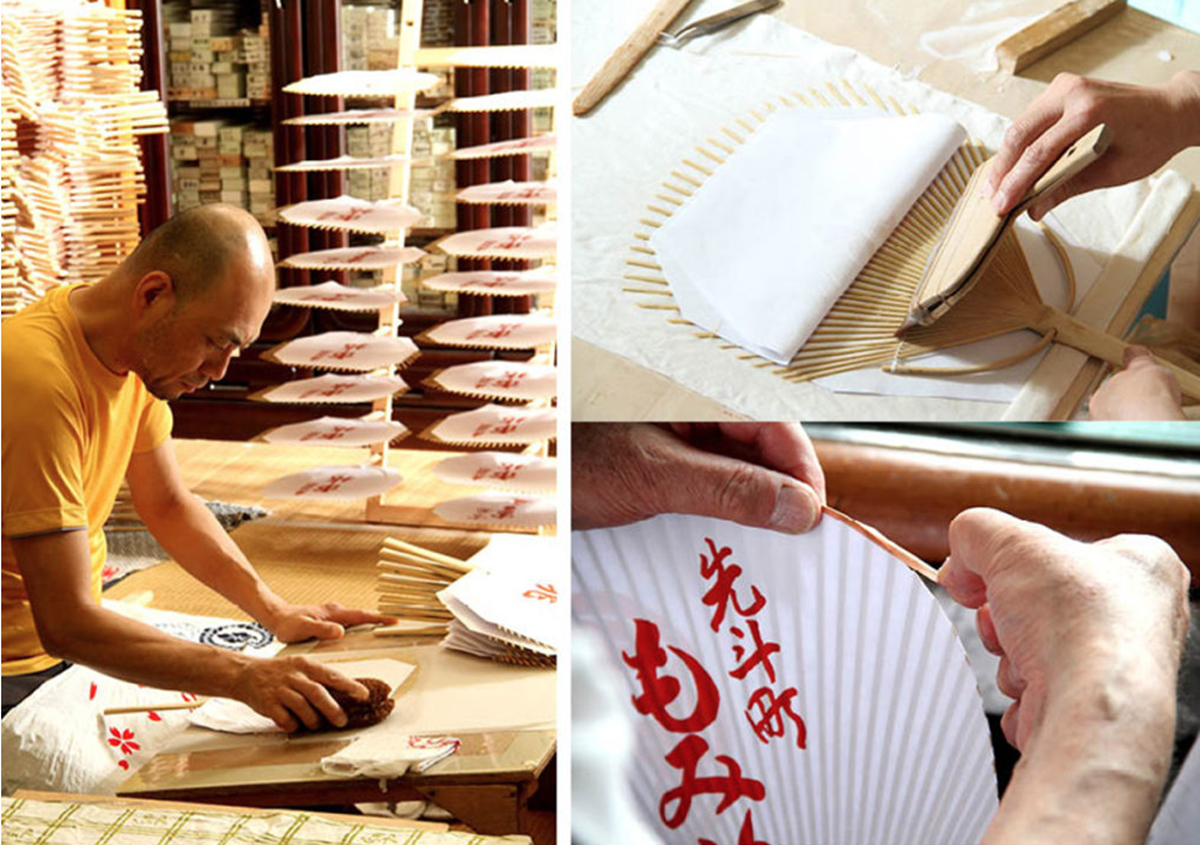
As much as we take uchiwa for granted these days, this traditional symbol of the Kyōto summer can be traced back directly to Komaruya Sumii, a business that continues to create a range of traditional Kyōto uchiwa, including the Kyō-uchiwa formerly used by the imperial court, and Fukakusa-uchiwa, made from bamboo grown in Kyōto’s Fushimi Fukakusa area.
The Sumii family’s history of making uchiwa for the imperial court can, in turn, be traced back to the late 1500s. While uchiwa these days are associated with ordinary folk, they were formerly a symbol of power and authority used by the nobility and high-ranking government officials, who would use them to conceal their faces in public, as a mark of dignity.
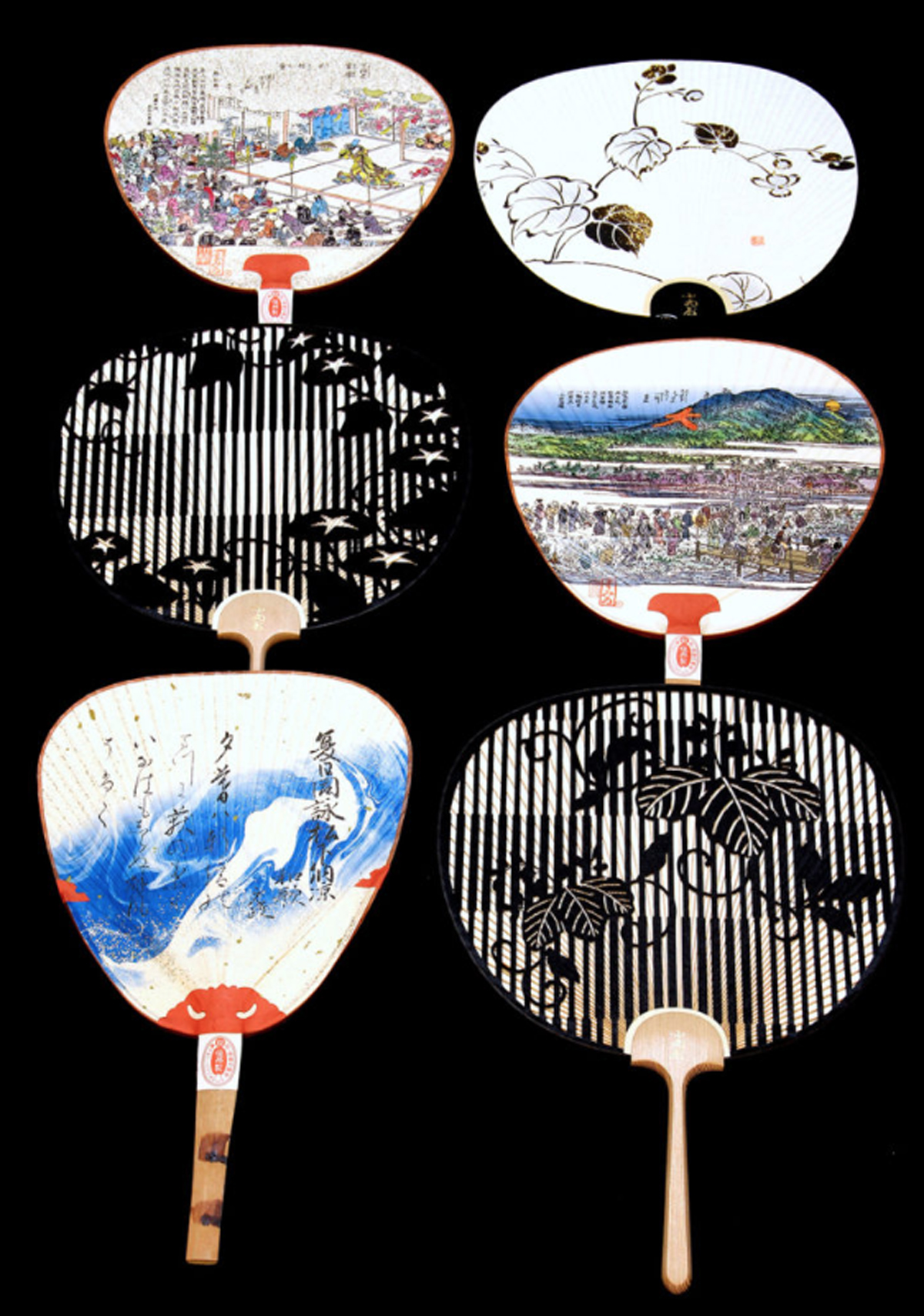
The iconic Fukakusa-uchiwa originated when the emperor of the time directed the Sumii family to begin making fans from the bamboo that grew prolifically in Fushimi Fukakusa. The Fukakusa-uchiwa is made from a single piece of bamboo, the upper part finely split to form the “ribs” of the fan, while the lower part becomes the handle. Being constructed from just one piece of bamboo, these uchiwa are particularly sturdy. Their popularity spread throughout the country during the Edo Period (1603 – 1868), when the use of these paper fans became widespread among the common people.
In the wake of this popularity, the Sumii household created a new flagship product, Kyōmaru-uchiwa, combining the “Kyō” from “Kyōto” and the “maru” from “Komaruya”. These are the fans that the geiko and maiko of Kyōto present to their patrons, but Komaruya Sumii can hand-paint ordinary customers’ names on the uchiwa instead, to create souvenirs and presentation items.
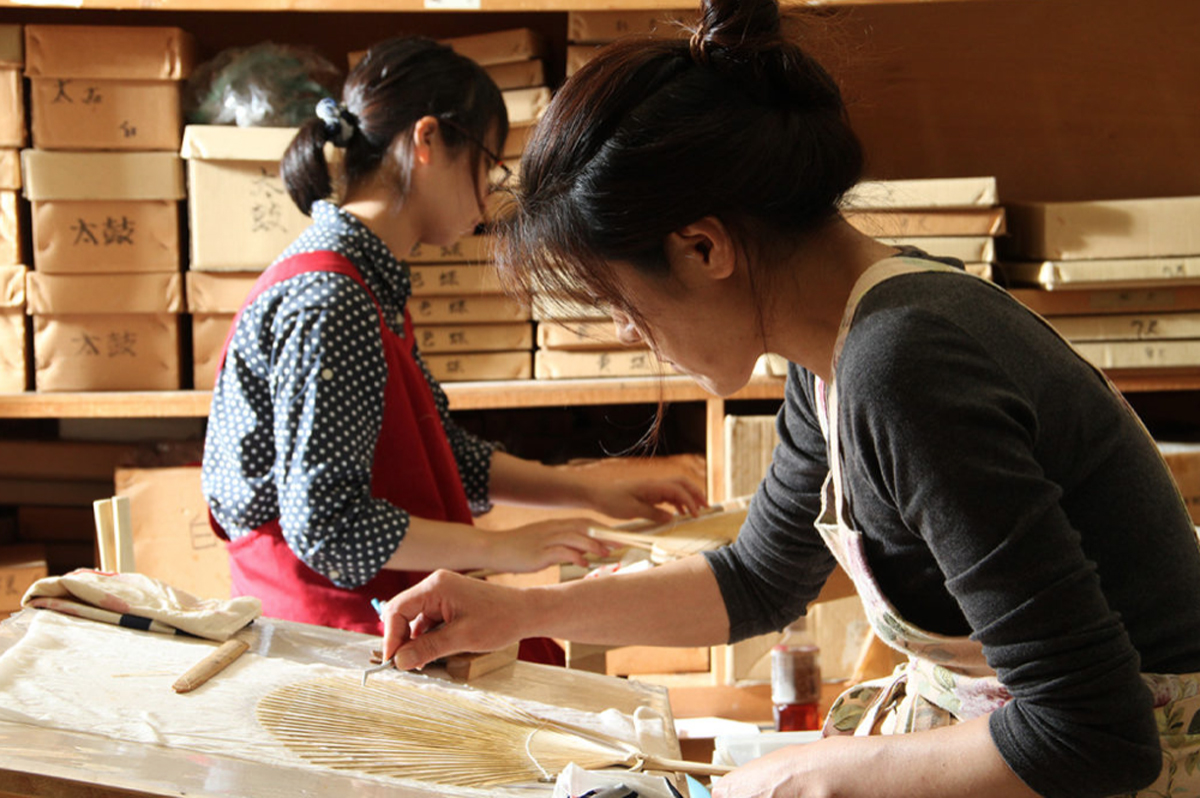
The process of making uchiwa begins around November each year. The newly-delivered bamboo frames are carefully inspected, then backing paper is pasted onto the bamboo ribs. Decorative paper is pasted onto the other side, and the paper is pressed and moulded over the slender bamboo ribs to bring out the fine lines of the framework beneath. The edges are then trimmed to the desired shape and size, and a slender strip of paper is applied to bind the outer edge. As simple as it may sound, all this work is done by eye and intuition. Getting the spacing between the ribs perfect, the consistency of the paste just right, and cutting the fan to exactly the right shape and size, takes many years of experience.
With as many as 30,000 uchiwa produced each year, 10th generation head of the family, Keiko Sumii, says that her aim is to honour her ancestors and preserve this traditional technique. Now in their sixth century, Komaru Sumii continues to deliver gentle cooling breezes to their customers, that Sumii-san says “you just can’t get from an air conditioner”.
Komaruya Sumii, Okazaki, Sakyō-ku, Kyōto
Address: 91-54 Okazaki Enshōjichō, Sakyō-ku, Kyoto
Phone: 075-771-2229
Main website (in Japanese): http://komaruya.kyoto.jp. Simple website in English: http://210.233.82.202/english/index.html
Hours: 10:00 – 18:00
Closed: Sundays and public holidays.
Nearest station: 5 minutes on foot from Higashiyama Station, Kyōto City Tōzai subway line.

There are currently seven artisans continuing the skilled work of making traditional uchiwa at Komaruya Sumii.




